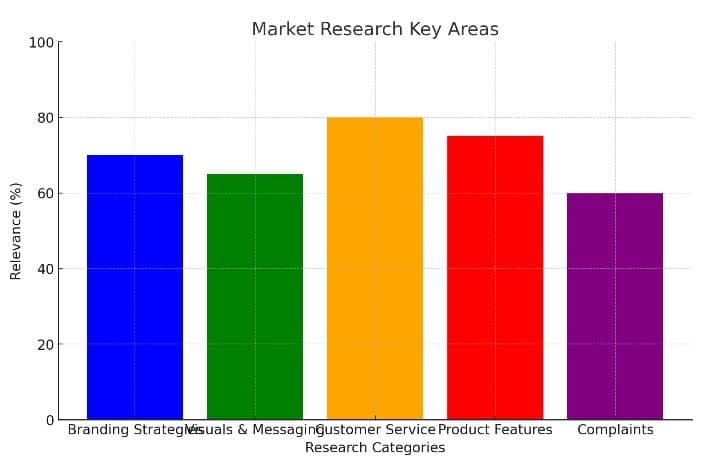When I first embarked on my branding journey, I quickly realized that managing a branding project is no small feat. From defining my vision to choosing the right color palette and typography, there were countless decisions to make. However, through trial, and error, and a lot of learning, I discovered some best practices that transformed my approach and set me on the path to success.
Whether you’re launching a new brand or refreshing an existing one, I’ve found that following a structured process and keeping a few key strategies in mind can make all the difference. So, keep reading as I show you how to effectively manage your branding project for impressive results.
Key Points
- A branding project involves creating or refining a brand’s identity to ensure it resonates with your target audience.
- Thorough market research and SWOT analysis help identify key opportunities and threats, refining your brand’s unique value.
- Effective branding project management ensures all elements align with your goals, staying organized and on track throughout the process.
- Innovative branding project ideas, like creating visual mood boards or launching engaging social media campaigns, boost brand engagement.
- Consistent feedback, flexible strategies, and stakeholder involvement are essential to adapting and refining your branding as needed.
What Is A Branding Project?
A branding project is essentially a journey to create or refine a brand’s identity. Let’s say you’re building a house, but instead of bricks and mortar, you’re constructing a unique image in people’s minds. This can involve designing a logo, developing a cohesive color scheme, and crafting a voice that draws your audience.
But it’s not just about visuals; it’s about the feelings and experiences tied to that brand. A branding project often includes market research, understanding your target audience, and defining what sets your brand apart.
In short, it’s all about telling your story in a way that captivates and connects with people. So, whether you’re starting fresh or giving your brand a makeover, a branding project helps shape how the world sees you.
How To Manage Your Branding Project
Managing a branding project might seem like a difficult task, but it can be an enjoyable experience if you approach it the right way. Yeah! Here are the things you need to do to manage your branding project effectively:
#1. Define Your Branding Goals
Defining your branding goals is the first thing you should do. It’s all about knowing your destination before you start your journey. Let’s say you’re launching a new product, like a line of organic skincare. Your primary goal may be to establish a strong presence in a competitive market. So, you’d start by asking yourself: Who am I targeting? If your audience is environmentally conscious Millennials, your branding should reflect sustainability and freshness.
You might also think about the message you want to convey. Do you want customers to feel luxurious with your products, or do you want them to appreciate the earth-friendly ingredients? Laying out these goals not only clarifies your vision but also helps you create a consistent strategy—from your logo to your advertising tone. So, take a moment to think it through; it’ll make the entire branding process much smoother!
# 2. Research the Market
Next up is research. Get to know your competition and understand what makes them tick. Examine their branding strategies—how do they present themselves to the world? Then, look closely at the visuals they use, their messaging, and how they engage with their audience. What do customers rave about? Maybe they love a company’s responsive customer service or a particular product feature. On the other side, take note of the complaints; these can serve as valuable lessons for your brand.

One tool to help organize your thoughts is the SWOT analysis. By identifying strengths, weaknesses, opportunities, and threats, you can gain a clearer view of where your brand stands in the landscape. Hence, this analysis helps you pinpoint what makes your brand unique and reveals gaps in the market that you can exploit.
#3. Develop Your Brand Identity
Creating a compelling brand identity is like writing a personality for your business. This includes elements such as your logo, color palette, typography, and overall visual style. Let me ask you, if your brand were a person, how would they dress, speak, and interact with others?
Imagine you’re launching a cozy café. You want your brand to evoke warmth and comfort, similar to the feeling of curling up with a good book on a rainy day. For your logo, you might choose a simple, relaxed font paired with a warm coffee cup graphic, something that feels approachable and homey.
Next, think about your color palette. Soft browns and creamy beiges can represent the rich coffee and pastries you serve, while a hint of sage green can give a nod to the freshness of your ingredients. This palette will create a calming atmosphere, inviting customers to settle in and enjoy.
As for typography, select fonts that reflect your café’s personality. Perhaps a friendly, rounded sans-serif for your menu and a more elegant script for your branding materials to create a balance of casual and sophisticated.
# 4. Craft Your Brand Message
Your brand’s voice is as essential as its visuals. Developing a clear and compelling brand message is crucial. Just see your brand as a person: what would it say, how would it sound, and what values would it uphold? This message, whether it’s a catchy slogan or a more detailed mission statement, should reflect what you believe in and what you offer.
For example, if your brand is all about sustainability, your message should shout that from the rooftops. It’s funny, but it’s worth doing. Consistency is super important too. Whether someone sees your social media posts, website, or advertisement, they should instantly feel that same vibe and understand what your brand is all about.
The goal is to create a strong connection with your audience, making your brand feel relatable and trustworthy. So, take a little time to think about your message—it’s a key part of your brand’s identity.
# 5. Involve Stakeholders
When you’re going into a branding project, I urge you to bring your team and other stakeholders into the conversation. Trust me, one or two people will bring unique experiences and perspectives that can enhance your approach. By bouncing ideas off one another, you might uncover insights you hadn’t thought of before.
Plus, this collaborative effort helps ensure that everyone feels invested in the branding direction and is on the same page. When your team is excited and aligned, it creates a much stronger foundation for your brand’s future. So, don’t hesitate—get everyone involved and watch the magic happen.
#6. Create a Branding Strategy
Once you’ve nailed down your identity and messaging, creating a branding strategy is your next step. This involves mapping out how you’ll present your brand both online and offline. Think of it as your brand’s game plan.
First, know where your audience spends their time. Are they scrolling through Instagram, hanging out on LinkedIn, or maybe visiting specific websites? Then, focus your tactics to meet them where they are.
For example, if your audience loves visual content, focus on social media campaigns that highlight engaging visuals. On the other hand, if they prefer in-depth information, content marketing with blogs and articles might be the way to go.
Don’t forget about your website design! It should reflect your brand’s identity and be user-friendly.
You know what? The best branding strategies are adaptable, so keep an eye on trends and be ready to pivot if needed. Remember, it’s all about forming genuine connections and making sure your brand resonates with your audience. You’ve got this!
To help you manage your branding project effectively, here’s a comprehensive checklist to guide you step-by-step!
Quick Checklist for Managing Your Branding Project
Also read these articles:
Branding vs. Packaging: Key Strategies for Standing Out in Nigeria’s Market
Branding Process: A Step-by-Step Breakdown
How to Build a Successful Lifestyle Brand: Strategies and Examples
Branding Project Management
Branding project management is all about overseeing the process of creating and maintaining a brand’s identity. I mean coordinating all the moving parts needed to make a brand stand out, from logo design to marketing strategies.
At its core, it involves planning, executing, and monitoring branding initiatives while ensuring that everyone is involved. I mean the designers, marketing teams, and stakeholders are aligned with the brand’s vision and goals. It’s a balancing act of creativity and organization, making sure that the brand remains consistent across all platforms.
So, whether you’re launching a new product or refreshing an existing brand, effective branding project management helps ensure that every detail reflects the essence of the brand. From there, create a cohesive image that attracts your audience.
Branding Project Ideas
When it comes to branding projects, I’ve got a few ideas that can help you. Imagine if you’re starting a new coffee shop. You can create a unique brand story that connects with your community’s love for locally sourced goods. Sharing tales of local farmers you partner with can make your brand connect more with your audience.
Another idea is to run a visual branding workshop. Consider gathering a group of creative minds—maybe even your team—and brainstorming together. You’d come up with a mood board that visually communicates your brand’s personality, mixing colors, fonts, and images that reflect your vibe. Honestly, it’s super collaborative and can lead to some amazing insights.
Lastly, think about launching a social media campaign. For instance, if you’re a chef, you can use the theme of “A Day in the Life” of your brand. Sharing authentic moments—like the hustle in your kitchen or the quirky things that happen in your store. Doing these can engage followers and build a loyal community around your brand.
Trust me, these projects can turn a branding strategy into a dynamic and relatable journey. What do you think?
What Should Be Included In A Branding Project?
When embarking on a branding project, several key components boost the identity of your brand. I see it as putting together a puzzle where every piece is essential for the final picture to make sense. Lovely, huh?
Well, the first thing you need is a brand strategy. This defines your brand’s purpose, vision, mission, and values. It’s the foundation upon which everything else is built.
Next, you can’t forget about the target audience. Understanding who your audience is and what they value makes tailoring your brand’s message and aesthetics much easier. So, take this step seriously.
Then comes the visual identity. This includes everything from your logo and color palette to typography and any design elements. All these visuals should reflect the essence of your brand and captivate your target audience.
Another essential component is a well-thought-out brand voice. This is about how your brand communicates—whether it’s friendly, professional, or quirky. This voice must be consistent across all platforms.
And lastly, I think you should have a brand style guide. This acts as a roadmap for anyone who works on your brand. That’ll ensure that your messaging and visuals stay consistent over time.
How To Get A Branding Project?
Getting a branding project can be exciting! Here’s what I typically do. First, I start by building a strong portfolio that showcases my previous work. I mean well-crafted case studies and eye-catching visuals.
Networking is key, so I make sure to attend industry events and engage with potential clients on social media. Also, I reach out to my existing connections, letting them know I’m looking for new branding opportunities.
When I discover a business that might need branding help, I like to do my homework. I analyze their current branding and prepare some insights or suggestions to show I’m genuinely interested.
Then, I write down my ideas, highlighting how I can add value to their brand. It’s all about being proactive, showing my passion, and demonstrating my expertise. Before I know it, I’m on my way to landing a new branding project. You too can explore these strategies and am sure you’ll get the best results.
How Long Is A Branding Project?
The duration of a branding project can vary based on the scope and complexity of what you’re trying to achieve. Typically, a full branding project might take anywhere from a few weeks to several months. For instance, if you’re just reworking a logo or tweaking some brand elements, it can be relatively quick—maybe four to six weeks.
But if you’re developing a comprehensive brand identity, including research, strategy, visuals, and messaging, you’re likely looking at a time frame of three to six months or even longer. Notwithstanding, a branding project is rewarding and it all depends on the specific goals and the resources you have available.
Related Articles
Developing an Effective Internal Branding Strategy: Key Steps and Considerations
What Is Corporate Branding?: Why it Works and How to Create One
Small Business Branding Ideas: 15 Creative Ideas for 2024






